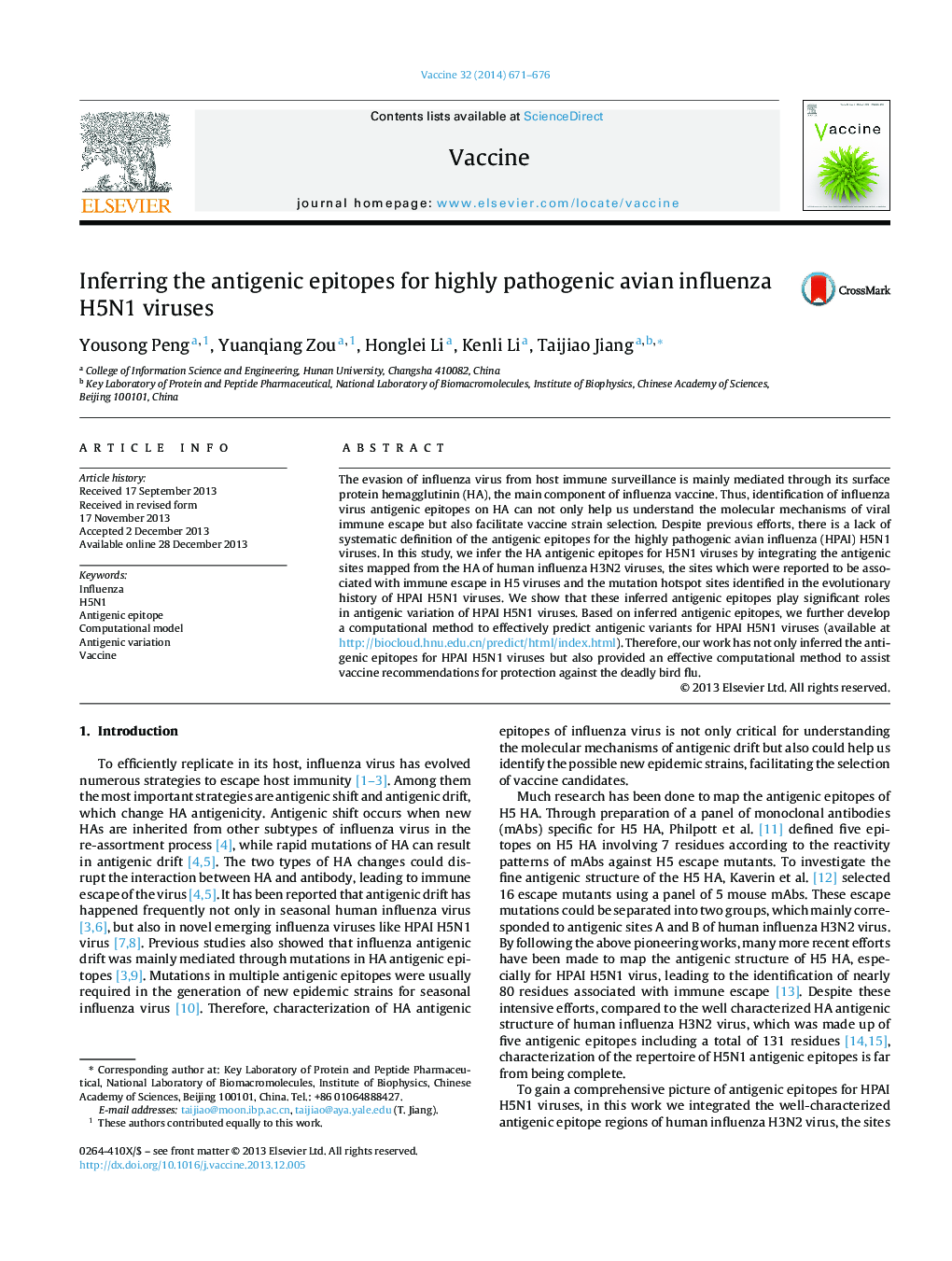| Article ID | Journal | Published Year | Pages | File Type |
|---|---|---|---|---|
| 10967150 | Vaccine | 2014 | 6 Pages |
Abstract
The evasion of influenza virus from host immune surveillance is mainly mediated through its surface protein hemagglutinin (HA), the main component of influenza vaccine. Thus, identification of influenza virus antigenic epitopes on HA can not only help us understand the molecular mechanisms of viral immune escape but also facilitate vaccine strain selection. Despite previous efforts, there is a lack of systematic definition of the antigenic epitopes for the highly pathogenic avian influenza (HPAI) H5N1 viruses. In this study, we infer the HA antigenic epitopes for H5N1 viruses by integrating the antigenic sites mapped from the HA of human influenza H3N2 viruses, the sites which were reported to be associated with immune escape in H5 viruses and the mutation hotspot sites identified in the evolutionary history of HPAI H5N1 viruses. We show that these inferred antigenic epitopes play significant roles in antigenic variation of HPAI H5N1 viruses. Based on inferred antigenic epitopes, we further develop a computational method to effectively predict antigenic variants for HPAI H5N1 viruses (available at http://biocloud.hnu.edu.cn/predict/html/index.html). Therefore, our work has not only inferred the antigenic epitopes for HPAI H5N1 viruses but also provided an effective computational method to assist vaccine recommendations for protection against the deadly bird flu.
Related Topics
Life Sciences
Immunology and Microbiology
Immunology
Authors
Yousong Peng, Yuanqiang Zou, Honglei Li, Kenli Li, Taijiao Jiang,
